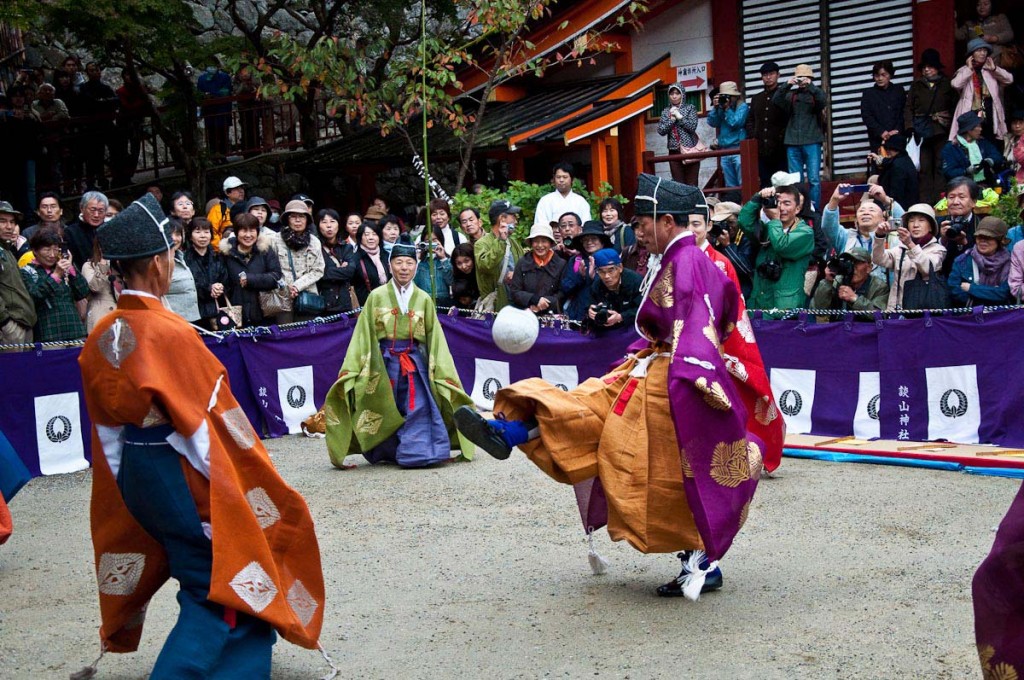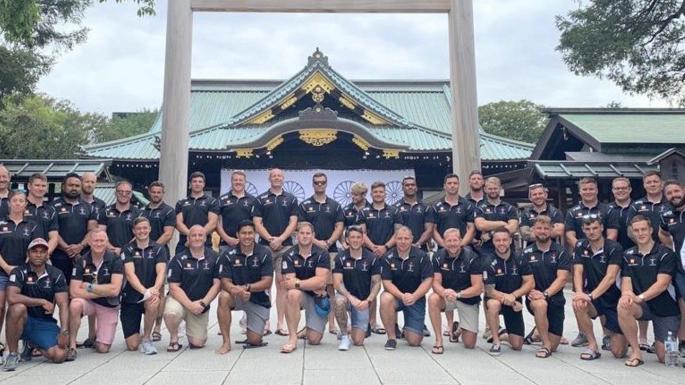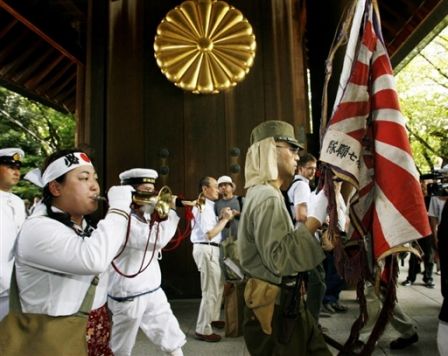World attention has been focussed on Japan these days for the rugby world cup, and in particular the stunning victory of underdogs Japan against the hapless world champions Ireland. The sport has awoken a sense of excitement in the country, and television programmes have replayed Japan’s winning tries over and over again. But what does this all have to do with Shinto?

Kemari
It just so happens my local shrine of Shimogamo Jinja, a World Heritage site, claims to be the home of Japanese rugby. It has ancient roots, and among the practices in times long past was kemari, the Heian art of kickball. The purpose was not to score a win, but for the group of players to cooperate by keeping a ball in the air as long as possible.
As befits a game created by aristocratic aesthetes, participants were expected to display skill and elegance rather than pure athleticism. Indicative of this were the beautiful kimono worn for the game. At the beginning of each year a display of the game is put on to provide an auspicious start, though the event is so popular it is difficult to observe.

First rugby game
Appropriately enough given its connection with kemari, Shimogamo became the first place in Japan where a game of rugby took place. This was in the midst of its woodland of Tadasu no mori, within the large clearing which is used for such festival activities as the Yabusame horse archery. (To read more about this historic occasion, click here.)
Today a monument marks the place where the first rugby game took place, and a subshrine sanctifies the spot. There are rugby shaped ema, for votive wishes. It’s not always recognised by commentators on Shinto how one of the religion’s prime features is the sanctification of national history. This is a direct result of its shamanic origins, for the role of the shaman was the preservation of tribal identity through memorialisation of its past. In this way Japanese not only honour their past; they worship it.
For the Rugby World Cup final on Nov 2, the Shimogamo shrine is erecting a huge screen and inviting 500 guests to attend. I’m sure there will be a Shinto ritual of purification prior to the event and that there will be a special sense of watching a historic moment in hallowed grounds. I hope to be part of the occasion too.
Yasukuni controversy

Memorialisation of the past can be controversial in some instances, as is evidenced above all by Yasukuni where the spirits of those who died in defense of the emperor since the Boshin War in 1868 are honoured. These include WW2 criminals.
Yasukuni played a vital role in the promotion of State Shinto, the ruling ideology during WW2. As such it remains a symbolic space used as a rallying point by far right nationalists. It thus prompted an outcry when it was revealed that a British military rugby team had visited the shrine prior to their match (the military rugby competition is a separate event from the World Cup).
It is customary in Japan for people to pray at shrines for good luck prior to exams, sports events and other endeavours. (On one of my book projects, I thought it would make an auspicious start to get it blessed at Fushimi Inari.) However, in this case it appears the British military rugby team were unaware of the political implications of Yasukuni, as the British ambassador was quick to point out to them.
“It was very, very naive,” Commander Arty Shaw, who organized the visit, told the Times. “The ambassador had a word or two, so we’ve been told not to visit any more shrines, just in case.” It seems the team had gone on a “cultural visit” to Tokyo Tower and the Yasukuni shrine, on Sept. 13. For a full report on the issue, see this ABC report from the USA.


Leave a Reply